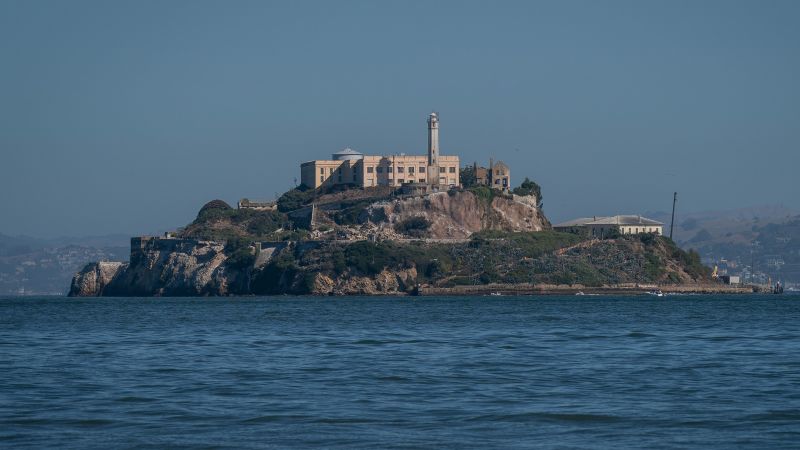Recently, a notable announcement emerged from former President Donald Trump via a social media post. On a Sunday, he proclaimed that he would direct the Bureau of Prisons to reconstruct and relaunch Alcatraz, the infamous federal prison located off the coast of San Francisco. This move is ostensibly aimed at providing a facility to “house America’s most ruthless and violent offenders,” as stated by Trump himself. Such a declaration reignited discussions about the famed penitentiary, which closed its doors in 1963 after nearly three decades of operation due to its high operating costs.
Trump’s post declared his intention to collaborate with key government entities, including the Department of Justice, the FBI, and Homeland Security, to facilitate the reopening of a significantly larger version of Alcatraz. He highlighted the necessity of this move to curb the influence of what he referred to as “criminals, thugs, and judges afraid to do their jobs.” In his words, the reopening would symbolize “law, order, and justice,” suggesting a broader narrative about the law enforcement landscape in America.
Upon arriving back at the White House that Sunday, Trump elaborated on his thought process behind this initiative, casting it as a necessary response to “radicalized judges” who purportedly prioritize the due process of undocumented immigrants facing deportation. He lamented the idea that “millions of trials” would be needed to address every individual in the country illegally, framing the legal system as overwhelmed and ineffective. This sentiment echoes a longstanding theme in Trump’s rhetoric concerning immigration and law enforcement policies.
The history of Alcatraz, which was established on an island known for its harsh conditions and notorious inmates like Al Capone and Robert Stroud, contributes to its legacy as a symbol of law enforcement. Trump remarked that, while Alcatraz had become a “sad symbol,” its historical significance remains poignant. The prison hosted some of America’s most infamous criminals during its operational years before closing due to exorbitant costs required for maintenance and day-to-day functioning.
Many resources indicate that it required around $3 million to $5 million just for restoration efforts to keep Alcatraz operational in the early 1960s, establishing it as one of the most expensive federal prisons at the time, significantly costlier than its counterparts. Subsequently, the National Park Service transformed Alcatraz into a tourist attraction, attracting an annual audience of approximately 1.2 million visitors eager to learn about its historical context.
Despite its change in function, Alcatraz remains a National Historic Landmark, a designation awarded in 1986. The potential for this designation to be rescinded exists but is dependent on the evaluation by the Secretary of the Interior or upon request. The parameters for maintaining the landmark status hinge on whether the site continues meeting criteria. Notably, if significant aspects of its historical integrity were lost, this could jeopardize its status.
As the public responds to Trump’s controversial proposal, notable figures have voiced dissent. Former House Speaker Nancy Pelosi, representing California and having a district that encompasses Alcatraz, criticized the idea as “not a serious one,” underscoring the reality that the prison ceased its function as a penitentiary over sixty years ago and now thrives as a national park and tourist site.
Interestingly, Trump Jr. had previously suggested reopening Alcatraz days after his father took office for a second term, illustrating a family alignment on this controversial vision. He even expressed support for the idea on social media. The legitimacy of the proposal remains to be seen, especially with ongoing critiques emerging from various stakeholders and experts.
The discussion surrounding Alcatraz, its storied past, and potential future revitalizes numerous conversations about crime, punishment, and the country’s judicial approach. As debates about such proposals surface, the implications of reopening a facility steeped in history invite broader discourse about justice, rehabilitation, and societal norms concerning crime and punishment in contemporary America.



